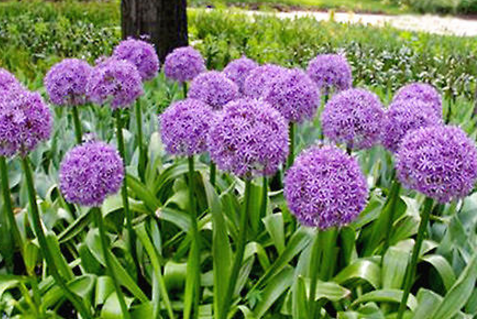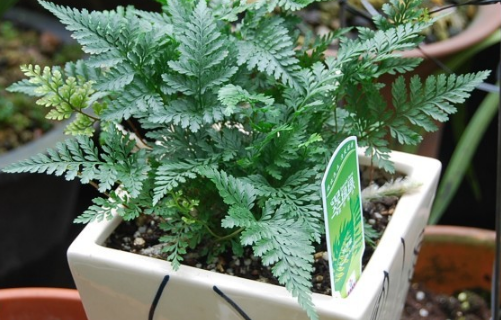Sowing method of scallions
1. In general, the seeds begin to mature in late July in midsummer, when they can be picked, then placed in a cool place, and sown in autumn.
two。 Usually from mid-September to late October, the seeds of scallions have strong adaptability, and it is best to turn over the soil to consolidate the soil.

3. Then sow the seeds by sowing, and the seeds can be mixed with moist sand and scattered into the soil without burying them too deep.
4. Cover a thin layer of soil where the seeds have been sown and water it with a small amount of water. Then it can sprout after a week.
Is it easy to raise large scallions? planting methods of large scallions
Large scallions, also known as Ji'an flowers, giant onions, high onions, scallions, etc., are perennial bulb flowers of the Liliaceae, native to Central Asia and the Mediterranean region. China is mainly distributed in the northern region, as a flower border, rock garden or lawn side decoration and beautification of varieties, with high ornamental value, let's take a look at the breeding methods of scallions!
Growth habits of scallions
Scallions originated from Central Asia and the Mediterranean region, mainly concentrated in the north of China, flowering in spring and summer, like cool and sunny environment, avoid damp, hot and rainy, avoid continuous cropping, semi-shade, suitable temperature 15-25 ℃, loose and fertile sandy soil, avoid stagnant water, suitable for cultivation in the north of China.
Propagation methods of scallions
1. Seed propagation: the seeds of scallions were collected and dried in the first ten days of July, stored at 5-7 ℃, sowed in autumn from September to October, and germinated in March of the following year. In summer, the upper part also withered and formed small bulbs, and the sowing seedlings needed about 5 years to blossom.
2. Ramet propagation: the bulbs around the main bulb were peeled in summer and autumn, and the sandy soil with low groundwater level, good drainage, loose and fertile sandy soil was selected as the cultivation land. each female ball can be divided into 1-3 small balls, among which the larger bulbs can bloom in the second year after planting.
Culture methods of scallions
The main results are as follows: 1. Scallions are a kind of flowers with very low natural proliferation rate of bulbs, but if they are removed as soon as possible after the appearance of scape, so that nutrients are concentrated on the development of regeneration bulbs and bulbs, the number of bulbs can be increased appropriately. If the aboveground part dies in summer, the bulbs can be dug out, large and small bulbs can be separated, and the ventilated place can be put over the summer.
2. Large scallions are planted after autumn. Those whose bulbs are more than 3 centimeters can blossom after planting, and those less than 3 centimeters need to be cultivated for one year before they can blossom. Bulbs proliferate in a cool and sunny environment, requiring loose and fertile sandy soil and avoiding stagnant water. It is suitable for cultivation in the north of China.
3. For open field cultivation of scallions, sandy soil with low groundwater level, good drainage, loose and fertile soil should be selected as cultivation land. the time of planting bulbs should be from mid-late September to early October, and the row spacing is 20 × 30 cm. The depth of planting is that the thickness of the overlying soil on the bulb is 2 / 3 times that of the fresh stem.
4. After planting, scallions are slightly pressed to level the cave surface, and then watered so that they do not need to be covered against cold in winter. When the leaves are unearthed in March of the following spring, loosen the soil and water in time, cooperate with liquid topdressing and water once every 10-15 days, pay attention to ploughing, loosening soil, weeding and adding a small amount of artificial spray or shade in dry places, which can ease the change of withered and yellow leaves in early summer.
5. The stems and leaves withered after the onion blossoms, and the bulbs should be dug up as early as possible before the rainy season, so as not to rot after the rain, put them away in a ventilated and dry place and put them away in an indoor ventilated place. They should be planted in 9 ~ 10 months, and the planting land should not be planted continuously. Pay attention to the application of rotten organic fertilizer. It is rainy in summer and needs timely drainage. Scallions are named because of their large inflorescences.
Seed sowing method of scallions, sowing time in September and October
Spring onions can also be propagated by seed sowing, which is generally better in September and October. Here are the seed sowing and propagation methods and steps.
Seed sowing method of scallions 1. Sowing time
The seed sowing time of scallions is better in September and October, and the temperature at this time is more suitable for seed germination.
2. Sowing soil
The sowing soil of scallions is not strictly selected, generally loess clay is OK, it is recommended not to use sandy soil, because the emergence rate of sandy sand may not be very good.
3. Sowing method
Spring onions can be sown by sowing. First, wet the fine sand, stir the seeds together, mix evenly, sow the seeds on the soil surface, do not need to bury them too deep, and do not recommend that flower friends sow seeds in bad weather.
After the seeds are sown, you can cover the seeds with a layer of thin soil, and use your hands to gather the surrounding soil over. The thickness of the thin soil should not exceed 4 cm. Everything is done, and then irrigation should be carried out. Watering cannot be washed directly to avoid washing away the seeds. It can sprout about a week to ten days after sowing.
4. maintenance in the later stage of sowing.
A, wait until the young buds of scallions grow into seedlings, as long as daily normal maintenance, do not need special care, because the varieties of scallions will not have major diseases.
B, scallions should be carefully managed before flowering, need to add 50 or 60 jin of fertilizer, adequate nutrition can prolong the flowering period, the number of flowers is more, ornamental is better.
C, the soil should be kept moist, but there should be no stagnant water, and the land should be replenished in time when it is dry. Pay attention to sufficient light when cultivating in the nursery and shade properly in summer, so that you don't have to gain weight after flowering.
- Prev

Water culture of Dryopteris Dryopteris
The planting basket is made to spread a layer of cotton at the bottom of the planting basket, and then put a layer of non-woven cloth on top of the cotton to ensure that the plant has enough water during its growth. note that the cotton thread should pass through the bottom of the planting basket. this will better fix the roots of the plant. Wash the wolftail fern with water in the basin.
- Next

How to raise iron tree and matters needing attention
How to raise iron tree and matters needing attention
Related
- Fuxing push coffee new agricultural production and marketing class: lack of small-scale processing plants
- Jujube rice field leisure farm deep ploughing Yilan for five years to create a space for organic food and play
- Nongyu Farm-A trial of organic papaya for brave women with advanced technology
- Four points for attention in the prevention and control of diseases and insect pests of edible fungi
- How to add nutrient solution to Edible Fungi
- Is there any good way to control edible fungus mites?
- Open Inoculation Technology of Edible Fungi
- Is there any clever way to use fertilizer for edible fungus in winter?
- What agents are used to kill the pathogens of edible fungi in the mushroom shed?
- Rapid drying of Edible Fungi

